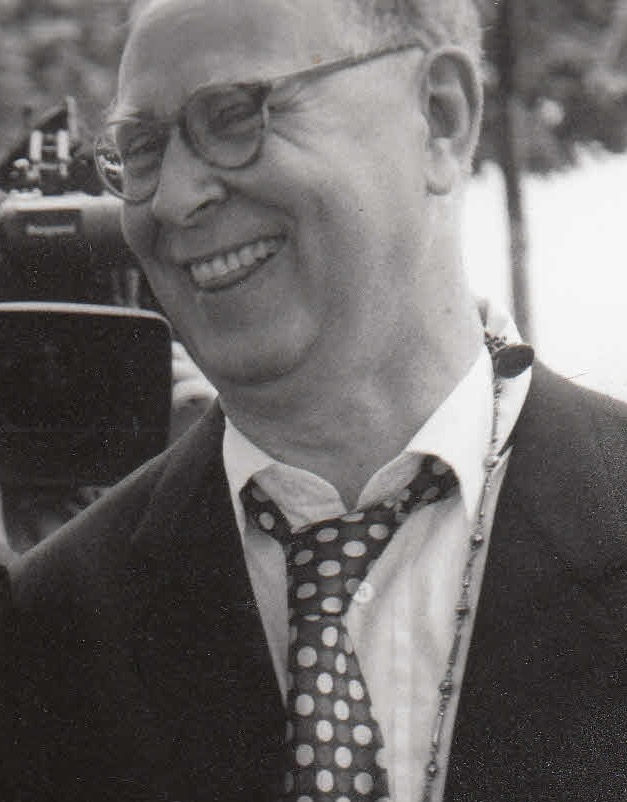
Sigmar Polke
Sigmar Polke is renowned as one of the foremost painters of the postwar era, known for his experimental approach to styles, media, and subject matter, using unconventional materials and techniques. He employed ironic and humorous imagery to critique society, politics, and aesthetics.
Biography of Sigmar Polke
Sigmar Polke was born in Oels, a small town in Lower Silesia, Poland. One of eight children, despite his father's occupation as an architect, the family lived with limited financial means. Born during World War II, he recalled how the war left a lasting trauma in his childhood. Like many Germans residing in disputed areas of Poland, his family was forcibly expelled from the country at the war's end in 1945 and sought refuge in Thuringia, East Germany. At the age of 12, in 1953, Polke managed to cross the border from East to West Germany, escaping the difficult post-war conditions in the communist German Democratic Republic.
In 1959, Polke started an apprenticeship at a stained glass factory in Düsseldorf, and in 1961, he enrolled at the Düsseldorf Arts Academy, where he studied until 1967. His instructors at the academy included Karl Otto Gotz and Joseph Beuys, both of whom had unconventional approaches to art that had a profound impact on the young Polke.
In 1963, while still studying in Düsseldorf, Polke co-founded the Kapitalistischer Realismus (Capitalist Realism) movement with Gerhard Richter and Konrad Lueg. This movement emerged as a response to Pop art and parodied and criticized the trappings of both Capitalism and Communism. The group organized exhibitions, including one in a furniture store, where Polke and Richter themselves served as exhibits. The artist's first solo exhibition took place in Berlin in 1966 at Rene Block's innovative gallery, quickly establishing him in Germany's experimental art scene.
Turmoil in his personal life and a failed marriage led Polke to embark on an itinerant phase of his career. In 1971, he started his nomadic journey, extensively traveling the globe throughout the 1970s, often in solitude. His wanderings took him to Paris, Pakistan, Afghanistan, South America, and the United States. Armed with a camera, the artist diligently chronicled his travels, experimenting with photographic development and printing techniques. This period is also notable for Polke's experiments with mind-altering substances, such as LSD and hallucinogenic mushrooms, as part of his artistic process.
In 1977, Polke became a professor at the Academy of Fine Arts in Hamburg, a position he held until 1991. In 1978, he moved to Cologne, where he lived and worked until his passing, except when he traveled.
The 1980s marked a significant international resurgence of painting, with Polke and his former collaborator Gerhard Richter at the forefront. During this period, he married his second wife, the Berlin sculptor Augustina von Nagel. Additionally, in 1986, he received the Golden Lion prize at the Venice Biennale.
In 1988, Polke became interested in Buddhist philosophies, partly influenced by his travels in the Far East and his daughter's adoption of Buddhism that year. He continued to create art until his passing in 2010, often collaborating with his wife and constantly exploring new materials and media, including photocopies and holograms.
Sigmar Polke's Art Style
Polke's artistic experiments aimed to challenge conventional art practices in inventive and unexpected ways. He defied artistic norms not only in terms of content but also in the materials he used, which were often unconventional. Polke employed diverse materials, including uranium, meteorite dust, printed fabric, soot, bubble wrap, and even potatoes, to push the boundaries of creative expression.
His work revolved around the concept of appropriation, as he questioned ideas of authorship, authenticity, and objectivity. The artist drew inspiration from well-known modernist artworks, including Jackson Pollock's drip paintings and Roy Lichtenstein's Ben-day dots. Like Marcel Duchamp, Polke raised important questions about the definition of originality in a society where duplication held value and the homogeneity of designer goods had become a status symbol.
Years:
Born in 1941
Country:
Poland, Oels